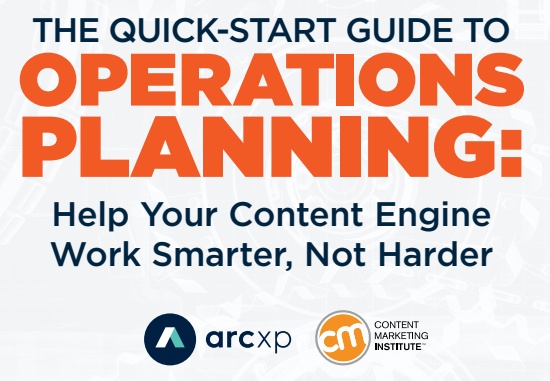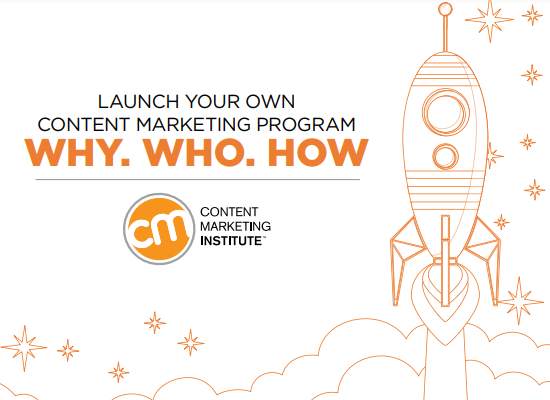The Essentials of a Documented Content Marketing Strategy: 36 Questions to Answer | Content Marketing Institute
Content Marketing
Why does a documented content marketing strategy matter?
The vast majority of content marketers operate without a documented content marketing strategy. However, research from Content Marketing Institute/MarketingProfs indicates that having such a strategy can yield significant benefits. Marketers with a documented content strategy tend to perceive themselves as more effective in their content marketing efforts, encounter fewer challenges, and demonstrate higher efficacy across various tactics and social media channels. Moreover, they are better positioned to justify allocating a larger portion of their marketing budget to content marketing initiatives.
Despite these advantages, there isn’t a one-size-fits-all template for creating a content marketing strategy. The format and level of detail required depend on the unique circumstances and objectives of each business. While smaller organizations might find success by simply walking through the strategy creation process without extensive documentation, larger enterprises often benefit from thoroughly documenting every aspect, including mapping out workflows and providing executive summaries.
Regardless of the approach taken, this guide aims to assist you in developing a comprehensive content marketing strategy. It will offer step-by-step guidance and pose essential questions to help you craft a strategy tailored to your organization’s needs and goals.
Checklist: Possible Questions to Answer in Your Documented Content Marketing Strategy
Innovation Business Plan
- What problems are we addressing?
- What’s our ideal outcome?
- What are the risks of failure?
- Whose insights do we seek? What permissions are required?
- What’s our budget?
- How frequently will we deliver?
- How do we handle interruptions?
- Execution plan and timeframe for each idea.
Content Marketing Business Case
- Why do we need content marketing?
- Is the need substantial?
- How does the business model operate?
- What sets us apart?
- Identifying risks and barriers to success.
Persona Development and Content Mapping
- Persona details and sales funnel overview.
- Customer buying cycle and contextual factors.
- Content needs across engagement stages.
Brand Story
- Current marketing landscape and competitor analysis.
- BHAG and call to adventure.
- Obstacles and guidance.
- New idea introduction and alignment.
- Long-term brand vision and differentiation.
Channel Plan
- Existing assets for storytelling.
- Necessary changes and discontinuations.
- Channel objectives aligned with the engagement cycle.
- Mapping channels to brand narrative.
- Specific goals and persona targeting.
- Content management and engagement strategies.
- Content attributes for each channel.
Business plan for innovation
When introducing an innovative process like content marketing, you may need to justify innovation. Why? Because it’s about gaining permission to fail. Proving ROI upfront isn’t feasible for untested initiatives. Hence, consider structuring the innovation process. Key questions to address include:
- What problems are targeted?
- What’s the ideal outcome?
- What are the repercussions of failure?
- Who should contribute unique insights, and what permissions are necessary?
- What’s the allocated budget?
- How frequently will outputs be delivered?
- How to handle unforeseen obstacles without abandoning the plan?
- What’s the execution plan and timeframe for each experimental idea?
Business CASE FOR CONTENT MARKETING
Once your organization greenlights experimentation, the next step is crafting a business plan for content marketing. As content marketing is often uncharted territory for many organizations, quantifying its “hard benefits” can be challenging. It’s crucial to distinguish: the business case isn’t about ROI, akin to seeking ROI for a telephone system. A robust business case for content marketing should succinctly answer five key questions:
- What’s the need? What outcomes do you aim for with content marketing? This encompasses goals like brand awareness, lead conversion, and customer retention.
- How significant is the need? Is your audience sizable enough to justify the plan? Can content marketing address existing pain points or enhance current marketing efforts effectively?
- What’s the business model? What’s the scope of your content marketing plan, and what team is required to execute it? How will it complement existing marketing endeavors?
- What’s your unique value proposition? Why prioritize content marketing over other endeavors? Can it enhance existing programs or reallocate resources effectively?
- What are the risks? Identify potential hurdles to success and their impacts. What measures can be taken to mitigate these risks, and how might they affect costs and returns?
Persona development and content mapping
Do you truly grasp the WHO behind your customers? First, understand that personas transcend demographics. Demographics are mere population attributes, like age or gender. It’s crucial to view your buyers as individuals defined by their behaviors, not just demographics. Though they may fall into segments, they’re distinct individuals. Follow these steps to gain a deeper understanding of your audience and their inquiries.
Develop Your Personas:
While a comprehensive buyer persona and content mapping may not always be feasible, identifying WHO you’re addressing is vital. Aim for one persona per distinct marketing group. Consider:
- Who is this individual?
- What are their needs (beyond your product)?
- Why should they be interested in your offering?
- What unique value proposition do you offer them? Create the Engagement Cycle Craft a defined engagement cycle to guide audience interaction with your brand. Map content to sales and consumer engagement stages to deliver relevant conversations.
- Content: What message do you want to convey?
- Context: When and where is the best time to start the conversation?
The Sales Process:
Define your sales process to track consumer progression through marketing and sales efforts. Regardless of step labels, identify consumers who:
- Are unaware of your brand
- Are informed about your brand (leads)
- Express interest in your offerings (subscribers)
- Evaluate your offerings against alternatives (prospects)
- Complete desired actions (buyers) Map your funnel, then segment content based on personas and funnel stages. Identify gaps and redundancies in your content strategy.

The buying process:
Now, outline how customers make purchases from you or, after purchasing, what actions you want them to take. A typical buying cycle, depicted in the illustration, isn’t linear. Consumers often transition in and out of stages as they progress. However, as they move closer to the center, their desires become more defined.


The engagement cycle:
Once you’ve delineated your sales and purchasing procedures, the next step is to overlay them to gain a clearer picture of your existing content and what additional content is required. This step aims to assist you in delivering the most pertinent content to the appropriate audience at the opportune moment. Note: While you don’t have to map content to this level for every product or process, it’s worth considering these questions for key segments:
- What language should we use for this content?
- What device context will consumers use to access this content (device, interface channel)?
- Why will individuals seek this content through this channel?
- What do we anticipate they will do with this content?
Explore Now: Unlock the Power of Content Marketing! Start your journey to effective content strategies today. Download now to dive deeper into the essentials of a documented content marketing strategy and elevate your marketing efforts!
The Table of Contents of “The Essentials of a Documented Content Marketing Strategy: 36 Questions to Answer” Guide:
- Why does a documented content marketing strategy matter?
- Checklist: Possible Questions to Answer in Your Documented Content Marketing Strategy
- Business plan for innovation
- Business CASE FOR CONTENT MARKETING
- Persona development and content mapping
- YOUR BRAND STORY
- Content marketing channel plan
- CONCLUSION
Number of Pages:
- 16 pages
Pricing:
- Free






